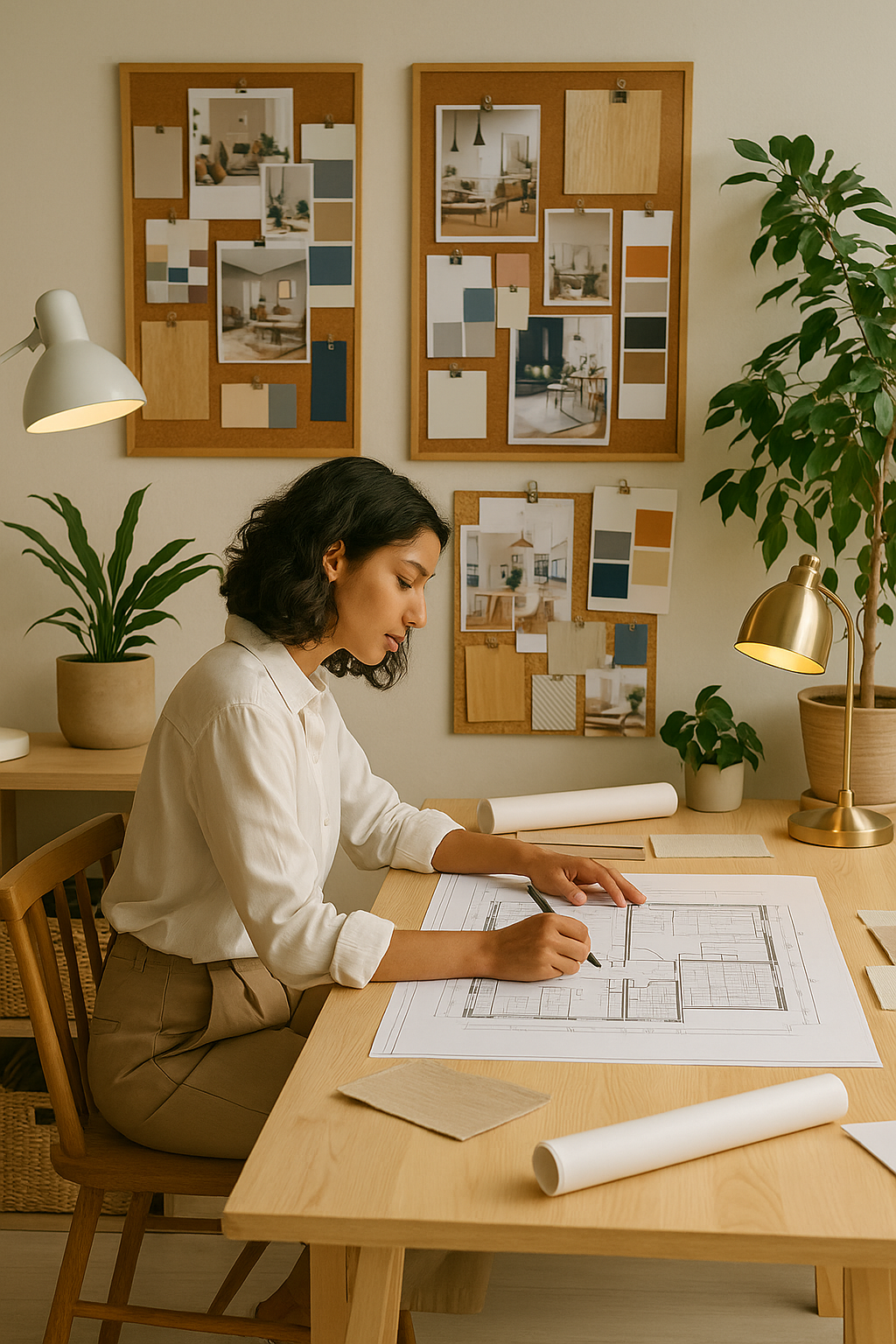The arrival of remote working has heralded a profound shift in how we live and behave in our homes. The home-office is now the most used room in the house and has introduced a new perspective on what living space means. The home-office deserves attention not just for comfort in work, but a thoughtfully planned office can boost productivity and have a positive impact on a person’s overall well-being. In this blog post, we will provide design ideas and product specifications to assist you in creating the ideal home-office that meets your personal needs and preferences.
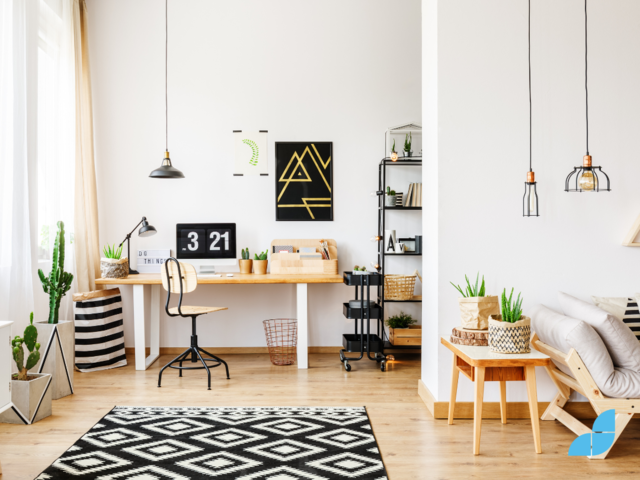
Examining your home-office requirements
Before you begin the design process, first examine your home-office needs. What are the primary functions of the office and are there space constraints or a work style that will impact your choices. Consider the following:
- Will you use the space solely for work, or will it also function as a reading nook, craft area, or anything else?
- Do you need plenty of storage for supplies and files or will a desk and chair suffice?
- Are you working in a shared space or a separate room?
By conducting a thorough assessment, you can identify the design elements and products that will best meet your needs.
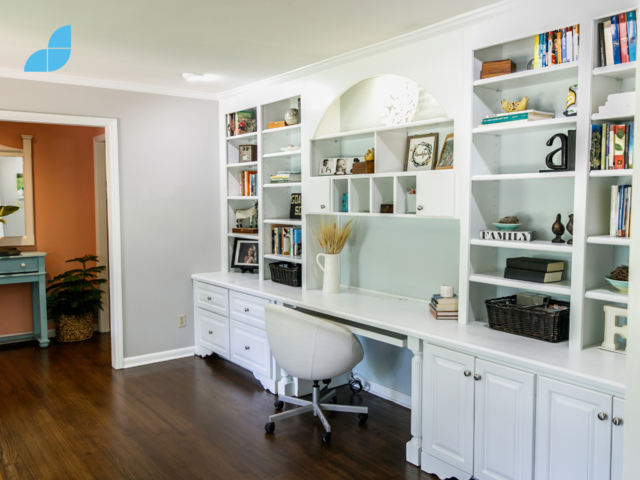
Designing the perfect workspace
A work environment that is both functional and comfortable is a key component for productivity. Here are some design ideas and product suggestions for creating an ergonomic and functional office:
- Desk: Select a desk with a generous work surface and legroom. Consider getting an adjustable-height desk so you can alternate between sitting and standing throughout the day. If you have a limited amount of space, choose multifunctional furniture such as a wall-mounted desk or a desk with built-in storage.
- Chair: To promote proper posture and prevent discomfort during long work hours, invest in an ergonomic office chair with adjustable seat height, lumbar support, and armrests.
- Storage: To keep the workspace organised and clutter-free, incorporate storage solutions such as filing cabinets, bookshelves, and floating shelves.
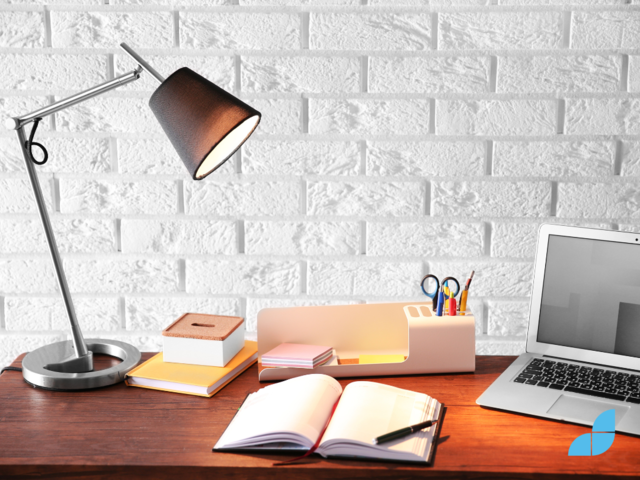
Lighting and ambience in interior design
Proper lighting is vital for maintaining focus and reducing eye strain. Ambient lighting is just as valuable as clarity and visibility.
Here are a few suggestions and ideas for optimal home-office lighting:
- Natural Light: Where possible, make the most of natural light by placing your desk near a window. Use sheer window treatments to both control brightness and protect your privacy.
- Task Lighting: A desk lamp is ideal task lighting for reading, writing, and computer work. To truly optimise your task lighting, choose a desk lamp with adjustable brightness and colour temperature settings.
- Ambient Lighting: Use floor lamps or wall sconces to create a soft, diffused light that fills the room and eliminates harsh shadows and glare.
- Accent Lighting: For a stronger aesthetic, highlight artwork or architectural features in the office with LED strip lights or decorative table lamps.
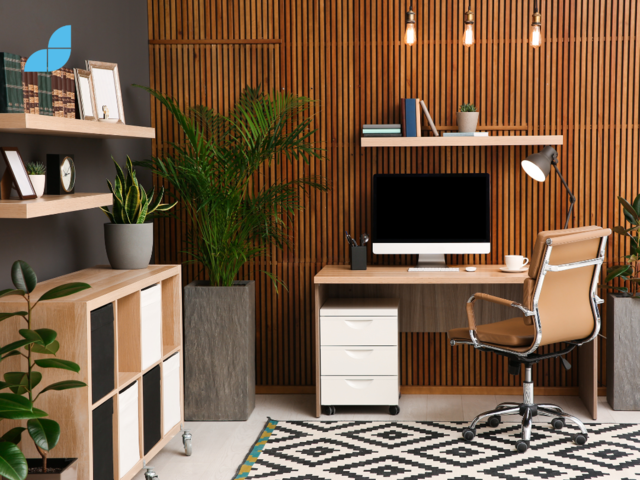
Customising an inviting home-office
If you are going to spend a lot of time in your home-office, then it will benefit from a little care and attention. Just because it is a workspace, doesn’t mean it can’t be an inviting and inspiring room. When choosing decor, opt for styles that reflect your personality and style. It is an opportunity to design your own workspace however you see fit. Here are some suggestions and products for personalising the workspace:
- Design Style: Put your own stamp on your office. Select furniture, colours, and accessories that reflect your personal style, whether modern, traditional, or eclectic. Include wall art, such as framed prints, canvas paintings, or photographs. These will not only make you feel more connected with the space, but it will help create a room you enjoy spending time in.
- Plants: Add a touch of nature to home with indoor plants. House plants have been proven to improve air quality and promote a sense of calm and focus.
- Accessories: To bring it all together and make it a little more stylish, add decorative items such as throw pillows, area rugs, and desk organisers.
- Colour Schemes: There are colour palettes that encourage concentration and creativity. Blues and greens have soothing properties and yellows and oranges are known for their energising qualities. Don’t be afraid to play with colour. It doesn’t need to be a corporate space, it is part of your home so you have the freedom to choose as you wish.
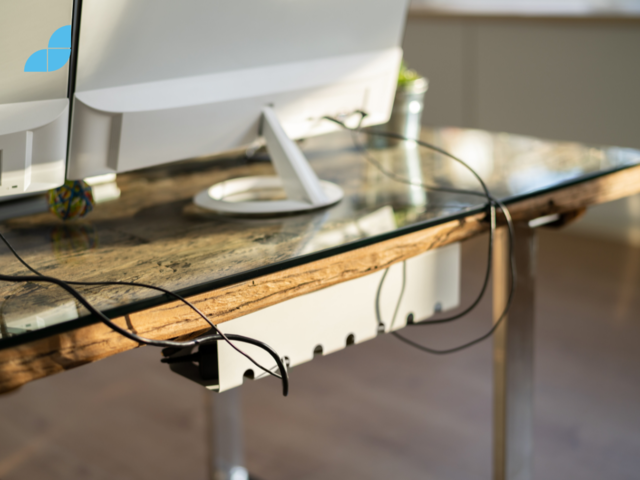
Technology and networking
A productive home-office requires efficient technology and connectivity. If you are self-employed, you must determine the devices and accessories you need, such as a computer, monitor, printer, and speakers, and make sure they meet their performance and compatibility requirements. If on the other hand your employer has provided your technology, ensure your desk and sockets are in convenient locations for power and access. Invest in cable organisers, such as cable clips, sleeves, or trays, to keep cords and cables tidy and prevent them from becoming tangled or becoming a tripping hazard.
To reduce clutter and create a streamlined workspace, choose wireless peripherals such as a keyboard, mouse, and headphones.
Maximising comfort and wellness
A well-designed and comfortable home-office can help reduce stress and promote overall well-being. Here are some suggestions to encourage a more comfortable and happier workplace:
Ergonomic Accessories: To improve comfort and potentially reduce body aches and strain, invest in ergonomic accessories such as a wrist rest for the keyboard, a footrest, or an anti-fatigue mat for standing.
Air Quality: Air purifiers or humidifiers are a reliable option for improving air quality. This helps to reduce allergens and promote respiratory health.
Breaks and Physical Activity: Sitting at a desk for long periods can be detrimental to your health. Create a routing of regular breaks and introduce physical activity into your workday. A short walk or even something as simple as desk exercises or a standing desk can make all the difference.
Acoustic Considerations: If noise is an issue, consider using sound-absorbing materials such as curtains, rugs, or wall panels, or investing in noise-cancelling headphones.
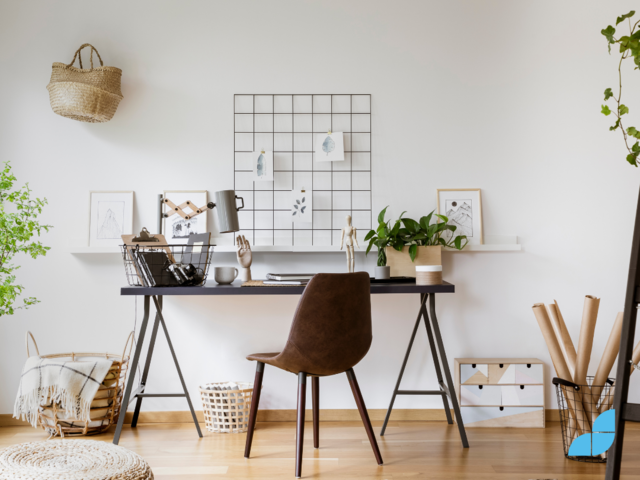
Top Interior Design Secrets: Expert tips for crafting the ultimate home-office space
When an interior designer begins planning a scheme for a home-office, there is much to consider. It must be a functional and professional space but there is also lots of scope for stylish design and aesthetics. Here are a few helpful hints for designing a home-office for a client:
- Assess Client Needs: Understand your client's specific needs, such as the type of work they do, if there are other uses for the office space, what are their work habits, and style preferences. This information will assist you in tailoring the design to meet their specific requirements.
- Optimise space: Begin by selecting appropriately sized furniture and implementing space-saving solutions such as multifunctional furniture or wall-mounted desks. Many home-offices are dual purpose so there is often more to consider than just office furniture.
- Prioritise Ergonomics: Select ergonomic furniture and accessories that encourage comfort and good posture. By removing the distraction of discomfort, productivity can be boosted. Look at adjustable chairs, desks, and monitor stands.
- Consider Lighting: To reduce eye strain and create a comfortable work environment, use a mix of natural and artificial lighting. Include task lighting for concentrated work, ambient lighting for general illumination, and accent lighting for aesthetics.
- Personalise the Space: Collaborate with the client to incorporate their personal preferences and style. This may include their favourite colours, artwork, and decorative elements that make the room feel more like a reflection of their personality.
- Maintain Organisation: Create plenty of storage options to keep your workspace tidy and clutter-free. Bookshelves, filing cabinets, and floating shelves are examples of this.
- Manage Technology: Plan for the client's technology needs, such as computer setup, printer placement, and cable management. To reduce clutter, consider wireless devices and accessories.
- Aesthetics and Functionality: Create a cohesive design that incorporates both aesthetics and functionality. Colour schemes, materials, and finishes should complement the client's preferred style while also meeting functional requirements.
- Wellbeing: Incorporate air purifiers, plants, or ergonomic accessories. All of these things will contribute to a healthier environment and subsequent wellbeing.
- Encourage adaptability: Create a space that can be easily adapted to meet the changing needs of a client. Modular furniture, adjustable lighting, and versatile storage solutions are a great way to include items that can be easily reconfigured or repurposed.
Working from home has many lifestyle benefits and for some people it is a unique opportunity to design a room in the home like no other. The home-office must meet the demands of a working office but it is often a multi purpose room within the home. Assessing your needs, designing a functional and comfortable workspace, optimising lighting and ambiance, personalising the space, ensuring efficient technology and connectivity, and maximising comfort and wellness are all part of creating the ideal home-office.
We hope this blog post has provided you with valuable insights and ideas for creating an exceptional home-office space. Remember, a well-designed workspace is crucial for enhancing productivity, comfort, and well-being. By implementing these design tips, you can craft a personalised home-office that meets your unique requirements. Keep exploring the Interior Design Academy of Ireland for more inspiration, resources, and courses to elevate your design skills and transform your living spaces.
At the Interior Design Academy of Ireland, you will discover a world of inspiration and expert guidance! Our extensive courses and resources are designed to help you hone your skills and create stunning home-office spaces that are tailored to the specific needs of your clients. Don't pass up this chance to improve your design skills and delight your customers. Enrol in our interior design courses today to realise your full potential as an interior designer!

